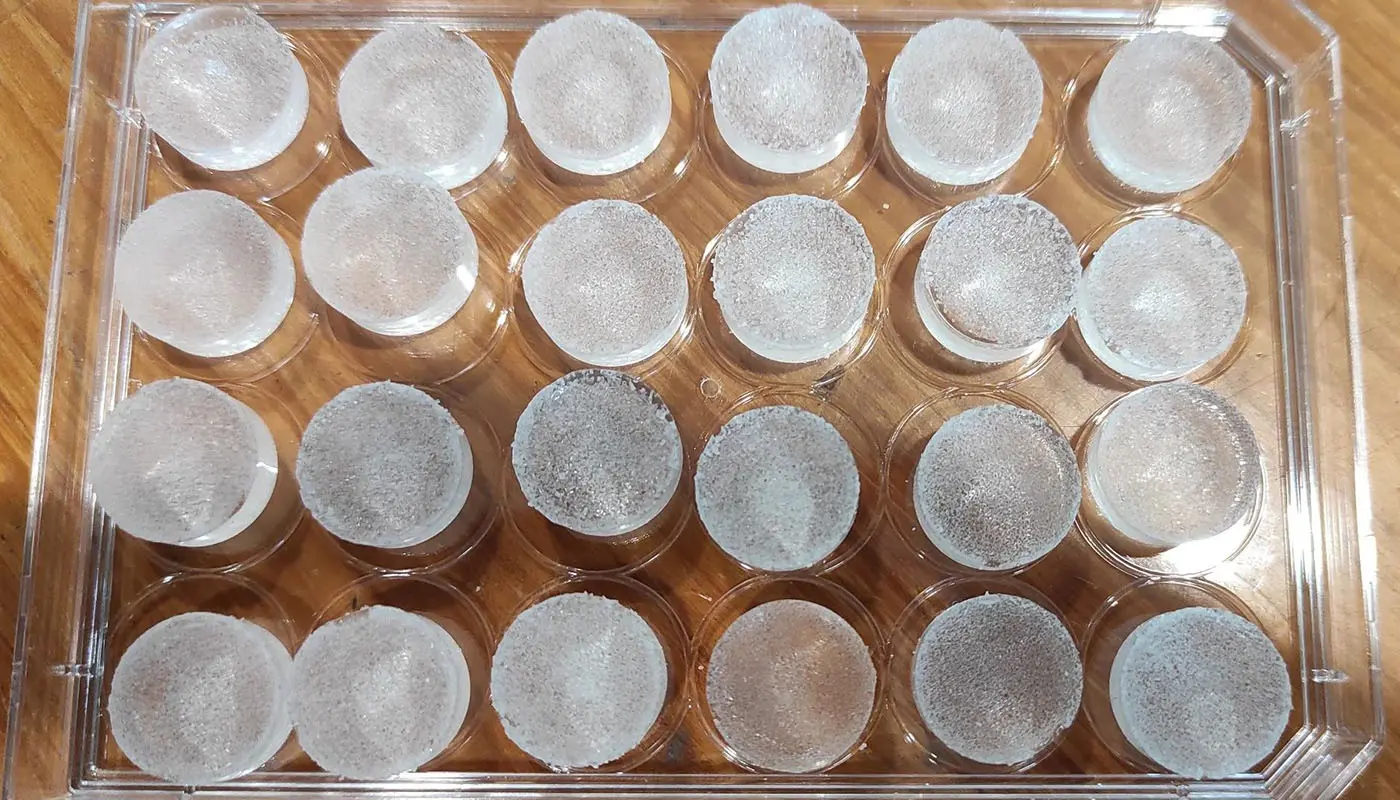SAFETY OF THE BREAST PROSTHESIS: SURFACE GEOMETRY IS FUNDAMENTAL

The research, conducted in collaboration between Humanitas and Politecnico di Milano, reveals the key role of the micro-geometry of breast implants in influencing the immune response in patients. This has significant implications for the development of increasingly safe devices and for improving the quality of life of women; first of all for those who resort to reconstructive surgery after an oncological pathway.
The shape of the surface of a prosthesis is able to interact in unexpected ways with the immune system: micro depressions or hollows used to make the prosthesis rougher and more stable can trap the cells of the immune system, generating an inflammatory state. The discovery was made possible thanks to a multidisciplinary approach involving surgeons, engineers, biophysicists and immunologists.
The data that emerged in the study add a new element – that of microscopic geometry – to the understanding of the inflammatory mechanisms linked to prostheses: until now, the scientists' hypothesis was that inflammation depended on the materials used, the presence of bacterial infections or the mechanical friction between the foreign body and the surrounding tissues. The study focused on breast implants, but its conclusions are relevant to all medical devices under the skin.
The research was conducted by dr. Valeriano Vinci, researcher at Humanitas University and surgeon at the Plastic Surgery Unit of the IRCCS Humanitas Clinical Institute directed by Prof. Marco Klinger, Prof. Gerardus Johannes Janszen, Professor at Politecnico di Milano, Dr. Cristina Belgiovine from the University of Pavia and Prof. Roberto Rusconi, Associate Professor of Applied Physics at Humanitas University and Head of the Biophysics and Microfluidics Laboratory at Humanitas.
The study was published in *Life Science Alliance * – the Open Access journal created by three institutions of excellence: EMBO, Rockefeller University and Cold Spring Harbor Laboratory – and was made possible thanks to the support of PRIN funding from the Ministry of Research.
Breast implants and inflammatory response
Medical prostheses are fundamental treatment tools: they keep us alive, as in the case of peacemakers, they allow us to start walking and moving again after trauma or joint diseases, and they help us regain possession of our identity, as often happens in the case of aesthetic and reconstructive breast implants, which many women resort to after oncological surgery.
But prostheses are also foreign bodies that must be housed inside an organism accustomed to responding to possible threats from the outside. That's why they can generate an inflammatory response locally. When this response is excessive, it can increase the risk of developing inflammatory, autoimmune, or even cancers, especially those associated with chronic inflammatory conditions. This is the case, for example, of anaplastic large cell lymphoma (known as ALCL), a very rare lymphoma with good cure rates – as long as it is identified in time – whose incidence, however, is slightly higher in patients with macro-textured breast implants, a type of implant characterized by a rougher surface, which was then taken off the market precisely because of this correlation.
"We discovered that the key element in determining the inflammatory response, both cellular and molecular, was not the presence or absence of bacterial infections, but rather the geometric surface structure of the different prostheses," says Prof. Roberto Rusconi. In the case of macro-textured prostheses, i.e. those with surfaces with particularly pronounced and angular depressions, like real micrometric wells, the inflammation is greater. On the other hand, smooth and micro-textured implants, i.e. only slightly 'rough' – an important property to keep them stable and reduce the risk of other complications – have low rates of inflammation and are confirmed to be safe.
To better understand the reason for this inflammatory reaction, the researchers faithfully reproduced the surface of the implants in the laboratory and studied how immune cells react in a controlled context. The experiment was made possible thanks to the collaboration with the group of Prof. Gerardus Janszen and Prof. Luca di Landro of the Politecnico di Milano.
Using an electron microscope, the dimensions of the cavities of the prostheses were evaluated and these were reproduced using different techniques depending on the surface of the prostheses.
For the replication of macro-textured surfaces, a PDMS (Polydimethylsiloxane) resin is poured into wells, normally used for in vitro culture. After a partial cross-linking of the resin, salt crystals are homogeneously distributed on the surface, the shape and size of which determine the final roughness.
For the reproduction of the micro-textured surfaces, the technique of replication (coating emulation) was used. Starting from the surface of a pre-existing prosthesis, possibly explanted, or from a surface of adequate roughness, replicas, in negative, of the micro-textured surface are made using low-viscosity thermosetting resin (e.g. epoxy). Resin replicas in the form of discs with a diameter equal to that of the wells are placed to cover the bottom of cylindrical containers of the same diameter. The PDMS is poured into these containers and brought to complete the cross-linking to obtain (positive) silicone elastomer counter-replicas in the desired number that faithfully reproduce the original surface, and which are then extracted from the containers and positioned on the bottom of the wells intended for subsequent tests.
Smooth surfaces are obtained by pouring the PDMS directly into the bottom of the wells and leading to complete cross-linking.
"Laboratory studies have confirmed what was observed in clinical samples. Not only that, but they allowed us to see what was really happening: immune cells, and in particular T lymphocytes, are trapped inside the wells on the surface of macro-textured implants. In this condition of confinement, they release communication signals between the cells of the immune system, the cytokines, characteristic of a state of chronic inflammation," explain Roberto Rusconi and Valeriano Vinci, who conclude: "The study gives a positive message on the safety of micro-textured prostheses and has a high translational value: thanks to this work we have developed a real technological platform for testing the surfaces of other types of prostheses and medical devices."